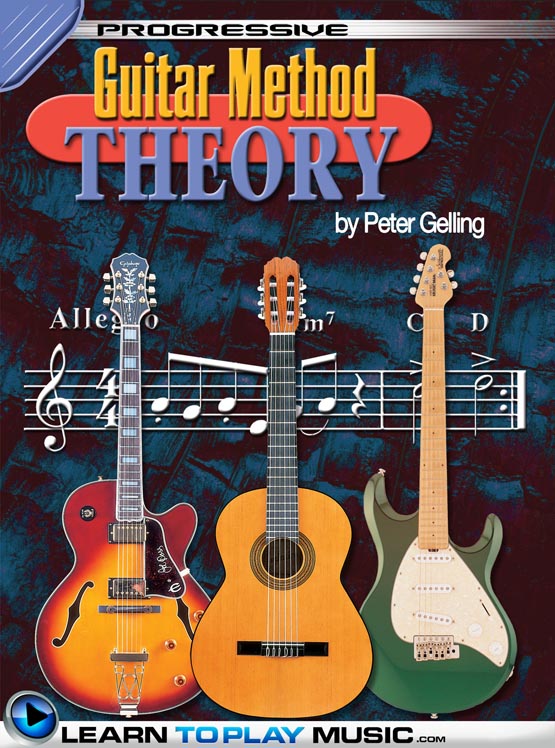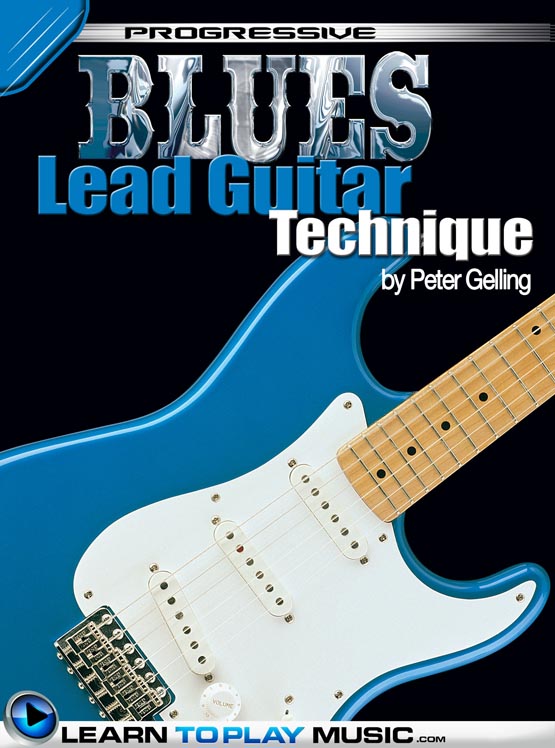
More titles by LearnToPlayMusic.com
Progressive Scales and Modes For Guitar
For Beginner to Advanced
Progressive Scales and Modes gives the student a complete system for learning any scale, mode or chord and makes it easy to memorize any new new sound as well as building a solid visual and aural foundation of both the theory and the guitar fretboard. The book also shows you how to use each scale as well as how and why it fits with a particular chord or progression. The final section contains jam along progressions for every scale and mode presented in the book.
Progressive Guitar Method: Theory
For Beginner to Advanced
A comprehensive, introduction to music theory as it applies to the guitar. Covers reading traditional music, rhythm notation and tablature, along with learning the notes on the fretboard, how to construct chords and scales, transposition, musical terms and playing in all keys. A useful tool for songwriting and composition, and essential for any guitarist who wants to become a better musician.
Progressive Blues Lead Guitar Technique
Intermediate to Advanced
The central approach of this book is the development of musical technique, dealing with rhythm as it applies to lead guitar playing and concentrating on the development of phrasing and timing and how to really get the most out of the notes you play. Along the way, the book introduces the Blues scale and other important scales and arpeggios commonly used by Blues players. Also contains lots of great solos.
Progressive Blues Guitar Solos
Intermediate to Advanced
Contains a great selection of Blues solos in a variety of styles reflecting the whole history of the Blues tradition from early Delta Blues to contemporary Blues Rock. Demonstrates various methods of creating solos along with sections on vocal style phrasing, call and response, developing a theme, dynamics and the use of space. Many of the solos are written in the styles of Blues legends like Muddy Waters, John Lee Hooker, BB, Albert and Freddy King, Buddy Guy, Albert Collins, Peter Green, Magic Sam, Otis Rush, Eric Clapton and Stevie Ray Vaughan.
Progressive Rock Guitar Licks
For Intermediate to Advanced
This book may be used by itself or as a useful supplement to Progressive Rock Guitar Technique. The licks throughout the book are examples of how the most popular lead guitar patterns can be used in all positions on the fretboard, and how various techniques can be applied to each pattern. Several Rock guitar solos are included to fully show how the licks and techniques studied throughout the book can be used to create a solo.
Progressive Funk and R&B Guitar Method
For Beginner to Advanced
This book demonstrates many of the classic Funk sounds, using both rhythm and lead playing, since a good Funk player needs to be equally comfortable with both. A variety of chord forms are introduced within a framework that quickly allows the student to play confidently over the entire fretboard. Features an innovative approach to learning rhythms and applying them to riffs and grooves.
Progressive Guitar Method: Fingerpicking
Beginner to Intermediate
Introduces right hand fingerpicking patterns that can be used as an accompaniment to any chord, chord progression or song. Also covers alternate thumb, arpeggio and constant bass style as used in Rock, Pop, Folk, Country, Blues Ragtime and Classical music. The book ends with several challenging and great sounding solos.
Progressive Jazz Guitar
For Beginning Jazz Guitarists
A simple and logical introduction to Jazz chord playing for the beginning Jazz guitarist. Covers all important chord types including Major, Minor, all types of Seventh chord, Ninth, Eleventh, Thirteenth, and Altered chords. Each chord type is presented separately along with its formula and relationship to the major scale. Typical chord progressions are given with each new chord type, gradually building up a whole system for Jazz rhythm playing either solo or in a group situation.
Progressive Guitar Chords
For Beginner to Advanced Guitarists
Shows you every useful chord shape in every key. An open chord section for beginners contains the simplest and most widely used chord shapes in all keys. A bar chord section for the semi-advanced player who will need a thorough knowledge of bar chord shapes in all positions. A section for the advanced player listing the moveable shapes for chords widely used by Jazz guitarists. Other sections contain important music theory for the guitarist including scales, keys and chord construction.








